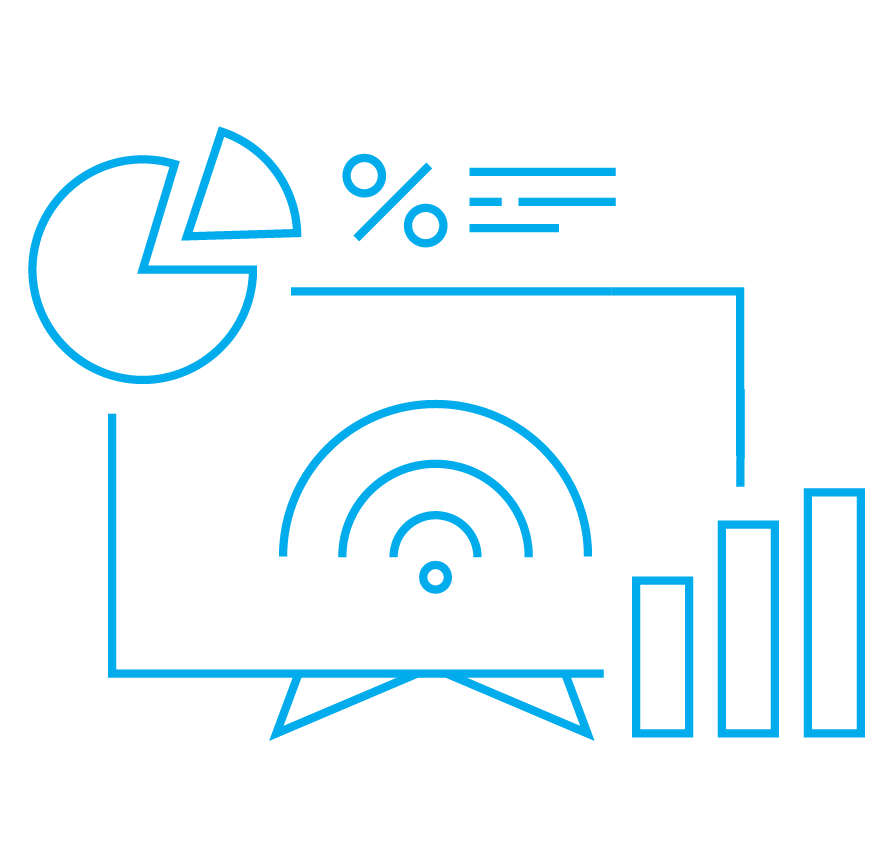- What is a geotargeting campaign
- Find out how to use data to reach mobile audience
- Data sources for geotargeting campaign
- Mobile Ad IDs and cookies
- Looking for the best audience group?
- Benefits of geotargeting campaign
- Example of geodata use: Integration OnAudience and mobile data from Yanosik app
- Conclusions
- Let’s talk about using mobile data in your campaign
The US marketers will spend over 30 billion dollars on mobile geotargeting campaigns this year – eMarketer reports. Possibility to target audience at the selected area is very attractive for marketers. That is why they’re focusing on geotargeting campaings, but they still don’t use it fully because of a whole bunch of different reasons – starting from a lack of initial data attributes for feeding a targeting campaign and ending with missed user’s consent for sharing data.
How the marketers can deal with this and reach their target audience anyway? Well, if the user didn’t give the consent, there is nothing much to do but to accept that, but for technical data-related issues, we have a solution.
What is a geotargeting campaign
A geotargeting campaign is a versatile channel to connect with millions of people worldwide at the right time, with the right and unique message. The geotargeting campaign is fueled by location data gathered for example from mobile apps, which is enriched by user’s characteristics, such as interests or purchase intentions. The analyzed dataset allows marketers to tailor the ads to the user’s preferences and place, which can take your personalization strategy to the next level.
How to differentiate data types for desktop and mobile geotargeting campaigns? First of all, by their sources.
Find out how to use data to reach mobile audience
Data sources for geotargeting campaign
You can segment your target audience and personalize your marketing offer beyond your initial rate. Knowing detailed attribution characteristics, you can model your data in own way. This is all about the high-quality, clear and relevant dataset that your data provider delivers to you for your campaign.
In OnAudience we deliver data not only about localization but also about used mobile applications, actions timestamps, device’s operating system, etc. Our company anonymize all types of data before it is processed and we do not store personal information that can be tied with a person. This proves our compliance with GDPR and CCPA regulations.
Mobile Ad IDs and cookies
In digital advertising cookies are used to receive data about mobile and desktop browser users and mobile Ad IDs are used for finding the mobile application users.
OnAudience serves the functions for delivering data about mobile application users, who belong to the segments, such as automotive enthusiasts, music lovers, etc. Mobile Ad IDs deliver values for the following geolocation fields:
• latitude and longitude,
• city,
• country,
For mobile and desktop browser users we use cookies and deliver next types of geodata:
• country,
• short IP.
Looking for the best audience group?
Benefits of geotargeting campaign
1. Hyper-personalization
Besides the opportunity to run the campaign with huge geographical reach, marketers can personalize their marketing offer and reach users from different cultural communities.
‘According to eMarketer, citing a 451 Research, around eight in 10 of the marketers surveyed plan on increasing use of location data within the next two years and they mention other studies from BIA/Kelsey, citing another forecast that US mobile location-targeted ad spending will more than double between 2017 and 2022.
When done right, personalization and targeted communications that are relevant and useful can create lasting customer loyalty, reducing acquisition costs as much as 50% and drive revenue growth of 10-30%’.
Christoph Herwig, VP Marketing at adsquare
2. Using historical geodata
You can keep historical geodata and include in your cyclic reports to compare your campaign results chronologically. This way you can build your seasonal offer and send it to the annual event participants with membership discounts.
3. Targeting locally
Actual data location also has an impact on search results – the same phrase can bring different outputs. For example, “Italian restaurant” searched in Warsaw and “Italian restaurant” searched from Berlin show two completely different lists of places with Italian food. This is tricky, but beneficial when correctly set.
Example of geodata use: Integration OnAudience and mobile data from Yanosik app
Connected external data resources can bring more insights into your target users’ behavior. Recently OnAudience database with 27 billion user profiles was integrated with data from mobile application – Yanosik, which is dedicated to car drivers.
The integration of Yanosik’s and OnAudience gave marketers an opportunity to easily reach car drivers on Polish roads.. It included combined and analyzed data about the drivers’ vehicle types, brands, speed, directions, and stops delivered answers for the listed questions.
For example, by using mobile data marketers can reach people that drive to work by car, find out which is the most popular gas station and store among the drivers, where do they live or how old is their car. For automotive industry it is a gold mine for finding future customers.
Conclusions
Digital experts analyzed the tendencies of the past and current ad spendings on geotargeting mobile campaigns and calculated the investment rise for the next two years – total ad spend in the US will reach almost 40 billion dollars by 2022.
The most efficient geotargeting campaign is fed with a combination of geolocation of your target users and their demographics and interests characteristics. Having a new local business or hosting an event in a new location, you have to run an ad campaign to inform relevant people about your products and services that they might find interesting.
This is where geotargeting is leading because your ads connect you with the right target group within the right geographical reach, and at the right time.



